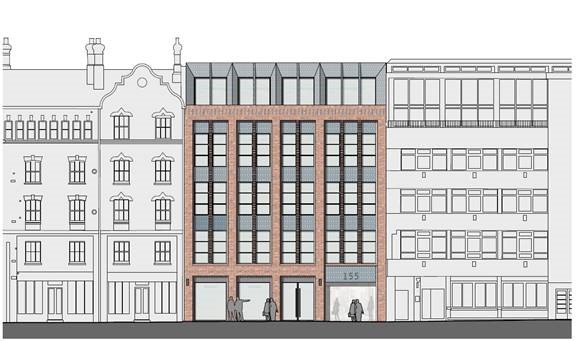In the heat of last summer, the Environmental Audit Committee published a report warning that UK temperatures could regularly reach 38.5°C by the 2040s, and that 7,000 heat-related deaths could occur every year in the UK by 2050 if action is not taken.
As developers and planners, we are among the many who have the means to reduce the numerous and undeniably dangerous effects of rising temperatures.
There is no doubt that the industry has already made significant progress in flood prevention, energy efficiency and renewables. But of those many new schemes which admirably address today’s challenges, how many will withstand the tropical summers of the 2040s?
And where claims of mitigating the effects of climate change have been made, will these schemes still stand up to scrutiny? It has been suggested that developers may face legal claims for damages and costs where properties fail to perform given the extensive projections on global warming. Jonny Clayton, head of masterplanning at Carter Jonas explains the important role that masterplanning has in tackling increasing temperatures. “The first stage in protecting a proposed scheme from the very real dangers of increased temperatures is to gain a comprehensive technical understanding of a given site and the natural systems of the land in order to map constraints. In turn these constraints provide a basis for developing a landscape-led layout and massing of built form. In addition we need to include measures to prevent flooding, which are well understood and widely implemented, so developments can be planned to withstand the increased risk of subsidence caused by shrinking clay soils. Some new buildings will require deeper foundations, depending on the ground on which they stand and the proximity, size and species of adjacent trees.
“Approaches to open spaces, water courses and the distribution, density and height of buildings should be reviewed to take projected increases into account. Outside spaces, particularly those with water bodies, will be of increasing importance. This is not only for leisure purposes, but because of the benefit that trees and vegetation bring in helping to reduce the urban ‘heat island’ effect. Wildlife ponds within green space and water fountains in the public realm are great for cooling, but should run from local sources, such as harvested rainwater, wherever possible, and should have a subsequent use.”
With our lawns still testifying to the recent hot, dry summer, it is also worth considering alternatives to traditional lawns. “Ensure the design of surfaces can withstand drought, and take in to account the likelihood of more intense use, permeability, potential for causing dust and for soil erosion”, Clayton advises.
“Deciduous trees can provide shade in summer, while permitting solar gain in winter. Similarly, plants, shrubs and trees should be selected carefully. Beech trees in eastern and southern England have already experienced some dieback during recent droughts while species such as Corsican Pine are predicted to benefit most from climate change.”
Finally, Clayton warns, “It goes without saying that outside spaces lose their appeal if waste, its decay accelerated by the warmer climate, is not adequately managed – so appropriate storage and disposal of waste should feature in scheme layouts at an early stage with provision for ease of collection.”
Current policy on climate change is not as constructive as we might expect. There are concerns that, following Brexit and the repeal of the European Communities Act, the UK law will not enshrine all EU environmental regulation. An Environmental Principles and Governance Bill is proposed to “ensure core environmental principles remain central to government policy and decision-making”, but following initial consultation on the Bill, experts expressed concerns that future UK legislation would be light on environmental protection.
Additionally, concern was raised when the first draft of the new NPPF deleted a footnote in the 2012 version which set out the important role of planning in implementing the Climate Change Act 2008, though this was later rectified.
And furthermore, the number of Environment Agency staff working in planning and development control roles dropped by 40% between 2011 and 2014. A report from the ‘Adaptation Sub- Committee’ on climate change claimed that while advice continued to be given on major developments, specific advice was not being provided on ‘thousands’ of minor planning applications in the floodplain each year, which would have an ‘unknown’ cumulative impact.
We don’t usually think of planning as a career with power over life or death, but clearly the industry does have the opportunity to reduce the ill effects of climate change, and as the threats increase, this is perhaps the most important aspect of our work.
Johnny Clayton heads up the masterplanning team. He has a broad base of project experience encompassing conceptual design, masterplanning, urban design, detailed design and project implementation.
For further information, please contact:
Johnny ClaytonHead of masterplanning
020 7518 3226
johnny.clayton@carterjonas.co.uk
This article was first published in Planning and Development Insite, Spring 2019 click here to download the issue.










